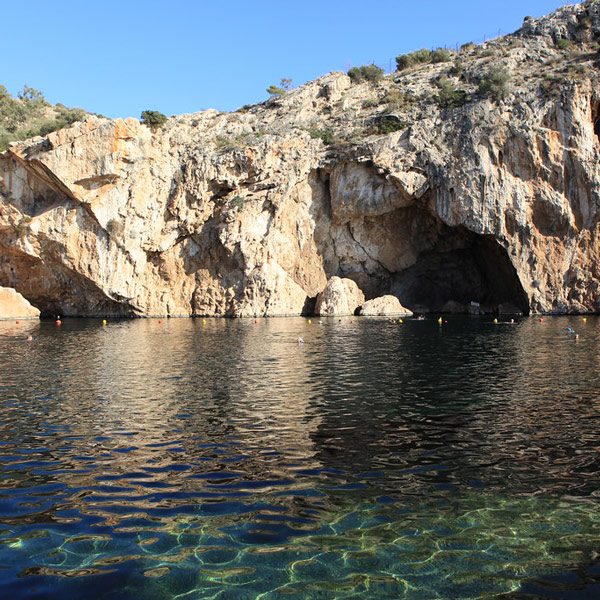Lost in the Abyss: The Haunting Mystery of Vouliagmeni Lake’s Vanished Divers


| Incident Location | Diver Full Name (Deceased) |
|---|---|
| Greece – Vouliagmeni Lake | Jan Granroth, Mark Granroth, Donald Minchard |
Greece, a land of ancient mysteries, conceals its own enigmas beneath its surface. With over ten thousand charted caves, some so treacherous they remain unexplored, the caverns of Vouliagmeni Lake stand out. This lake is notorious for its perilous underwater maze and unpredictable currents, posing significant challenges for even the most skilled divers. In 1978, tragedy befell three Americans who ventured into its depths: Jan Granroth, Mark Granroth, and Donald Minchard.
The Origin of Vouliagmeni Lake:
Located 15 miles south of Athens, Vouliagmeni Lake’s history dates back 2,000 years when it was a massive cavern that collapsed after an earthquake. The lake boasts unique environmental conditions, with warm seawater constantly flowing in through underground channels, maintaining a temperature of around 28 to 35 degrees Celsius. Deep inside the mountain, uncharted underwater caves continue to challenge explorers.
The Hidden Submerged Cabin:
Within the lake lies a submerged cabin near the rocky edges, surrounded by 14 tunnels that weave through the cave system. One of these tunnels extends a staggering 800 meters in length and 60 to 150 meters in width, making it one of the world’s longest. A colossal stalagmite, 105 meters deep and 730 meters from the entrance, adds to the cave’s allure. Numerous underwater expeditions have sought to map its intricate depths.
A Risky Past:
Cave diving in the cave dates back to the 1940s, with the Germans as the earliest known explorers. Tragically, inexperienced divers lost their lives due to strong currents and a lack of familiarity with the cave’s complex terrain. Many of them lacked essential equipment, like the Ariadne’s Mitt, a vital nylon rope for navigation. In 1995, the cave was closed to the public for safety reasons, allowing only scientific diving.
Ambitious Exploration:
In 1988, Swiss diver Jean-Jacques Bolins initiated an ambitious project to explore and map the cave, backed by the Ministry of Culture and financed by the municipality of Vouliagmeni. During his first dive, Bolins discovered a narrow passage leading to an underwater chamber with a staggering volume of 1.2 million cubic meters. Bolins attributed previous divers’ deaths to strong currents and a lack of knowledge about the cave’s geography and morphology.
A Tragic Legacy:
Tragedy continued to shadow the cave’s explorers, with six more losing their lives due to inadequate equipment and lack of cave familiarity. Their bodies were never recovered, intensifying the cave’s reputation as a perilous labyrinth. The use of dye in the water and desperate search efforts yielded no results. The cave remained closed to the public, with only scientific diving allowed.
The Ill-Fated Trio:
In 1978, Air Force Sergeant Donald Minchard, along with siblings Jan Granroth and Mark Granroth, embarked on a journey to explore the cave. Donald was stationed at the U.S. Air Force support base near Athens, Greece. The Granroth siblings, both avid divers, joined him. The trio made a series of critical errors, diving into the cave without guidelines, lights, or spare tanks, leading to their tragic disappearance.
Diving into Darkness:
In 1978, cave diving was still in its early stages, and proper training was lacking. The trio’s mistakes compounded as they entered the cave without essential equipment. Lost within the labyrinthine tunnels, they fell victim to deep narcosis, which led to confusion, disorientation, and ultimately, their disappearance.
Desperate Search and Abandonment:
Search efforts included using dye in the water near the cave entrance, but they proved futile. Greek authorities eventually called off the search after a diver nearly drowned when a current ripped off his face mask. The families of the missing divers continued their relentless pursuit of answers, seeking closure for almost three decades.
The Long-Awaited Discovery:
Nearly 30 years later, the remains of the missing divers were discovered by a diving club searching for another lost diver. Greek authorities conducted DNA testing, confirming the identities of Jan and Mark Granroth. The long and agonizing wait for answers finally came to an end, providing some closure for their families.
Grief and Memories:
Funerals for Mark and Jan were held in August 2007, while Donald Minchard was laid to rest in Biddeford, Maine. The families of the deceased divers continue to cherish their memories, knowing that the pain of losing young loved ones never truly fades away.
The Vouliagmeni Lake caves, with their unfathomable mysteries and unforgiving depths, serve as a stark reminder of the dangers that await those who dare to explore the unknown.
FAQ
Vouliagmeni Cave reaches depths of around 105 meters (344 feet).
Vouliagmeni Cave is perilous due to its unpredictable currents, labyrinthine tunnels, and challenging underwater environment.
No, Vouliagmeni Cave has been closed to the public since 1995, permitting only scientific diving for safety reasons.
